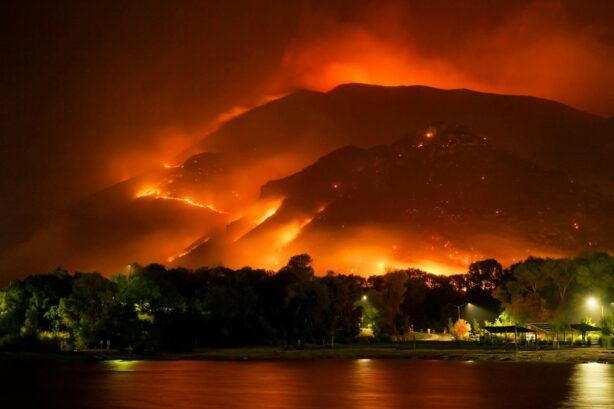As wildfires continue pose a threat to communities around the world, it’s become essential for families living in wildfire-prone areas to be prepared for the possibility of evacuation.

There’s no question that evacuation can be a daunting prospect. But, proper preparation can help keep your family and your home safe in an emergency.
From creating an emergency kit to minimizing the spread of fire on your property, here are the steps to take to ensure you’re prepared for wildfire evacuation:
Keep an Eye on Risk Levels
The first step in being prepared for wildfire evacuation is to understand the risk wildfires pose to your area.
Familiarize yourself with local wildfire danger levels, evacuation routes, and emergency resources available in your community.
Make sure to check weather forecasts and wildfire alerts regularly, so that you can maximize the time you have to prepare.
Create an Evacuation Plan
Developing a thorough evacuation plan is the cornerstone of wildfire preparedness.
Start by identifying multiple evacuation routes from your home itself, and determining a designated meeting point for your family in case of separation.
Ensure everyone in your household understands the plan and knows how to execute it efficiently.
Next, make sure you research different routes to safety when it’s time to leave your property.
Since you don’t know what roads and routes might be accessible during an emergency, having thorough knowledge of your options is essential.
Prepare an Emergency Kit
Wildfire evacuation isn’t the only natural disaster a family can face, which is why every family should have an emergency kit containing enough essentials to last your family a minimum of 72 hours.
Your kit should include non-perishable food, water, medication, first-aid supplies, clothing, personal hygiene items, flashlights, batteries, a multi-tool, and important documents.
It’s also a smart idea to include some cash or an emergency credit card.
Keep the emergency kit in a place that makes it easy to grab if you have to leave in a hurry. If you have the resources, consider creating a second emergency kit that you can keep in your vehicle.
Protect Your Home
If you live in an area prone to wildfires, you may want to minimize potential wildfire damage to your property by implementing preemptive measures.
Smokehouse Creek wildfire attorneys mention that wildfire losses often include significant property damage caused by soot, ash, smoke, or the fire itself.
To help ensure damage to your property is as minimal as possible, clear flammable debris, such as dry leaves and branches, from your yard, and remove combustible materials from your immediate surroundings.
Install spark arrestors on chimneys, use fire-resistant materials for roofing and siding when building, and consider creating defensible space around your home, a zone free of flammable vegetation.
You’ll also want to encourage fire safety within your household to minimize the risk of accidental fires.
Outdoor fire pits, fireworks, gas-powered yard equipment, and recreational vehicles can all pose a fire risk if not used responsibly.
Ensure your family members know how to safely use items that may pose a fire risk, and consider restricting use if the risk of wildfires is high.
Check smoke detectors, fire extinguishers, and sprinkler systems regularly to ensure they’re functioning properly.
Plan Your Communication
To ensure you’re able to stay in contact with each other if you get separated, designate somebody outside the wildfire area as an official contact person.
Let every family member know to contact this person immediately if they’re alone during an evacuation order.
Keep chargers for cell phones in all family vehicles, and consider also adding a portable radio or scanner to your emergency kit.
This will let you follow emergency radio broadcasts and community alert systems for updates and evacuation orders.
Stay Informed and Vigilant
If you’re facing a period of high wildfire risk, make sure you’re ready to enact your evacuation plan at a moment’s notice.
Monitor local news outlets, weather updates, and wildfire activity reports to stay informed about evolving situations.
If authorities do issue an evacuation order, don’t waste any time following it. It’s crucial to prioritize the safety of your family above all else.

Preparing your home and family for wildfire evacuation is an essential step in safeguarding lives and property in the face of a natural disaster.
With everyone in your house ready to act if necessary, you’ll be in the best possible position to get through an evacuation as smoothly and safely as possible.
